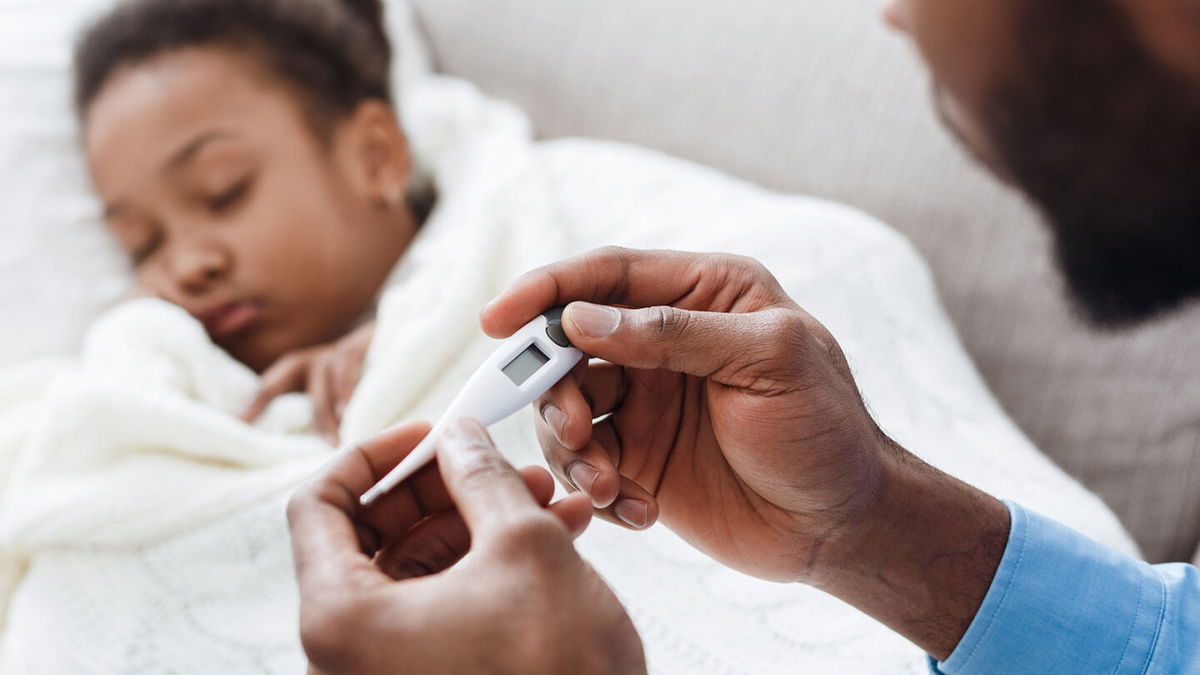1 in 3 parents give fever-reducing medicine when it may not be needed, new poll says

Fever-reducing medications may keep children comfortable
By Taylor Nicioli, CNN
Many parents turn quickly to fever-reducing medication when their children begin to show signs of a fever, but pediatricians are warning that may not be needed.
According to a new C.S. Mott Children’s Hospital National Poll, 1 in 3 parents would give their children medicine for a low-grade fever, defined as below 100.4 degrees Fahrenheit (38 degrees Celsius), and 1 in 2 parents would use medicine for a fever between 100.4 F and 101.9 F (38 C and 38.83 C).
These medications may keep your child comfortable, but unnecessary usage can postpone the diagnosis of what is causing the fever by masking the pain and other symptoms.
“When parents note that their child’s temperature might be a bit elevated, I think that sometimes they’re concerned about the fever itself,” said Dr. Susan Woolford, Mott pediatrician and Mott Poll codirector. “Maybe it’s not entirely clear to parents that the fever itself is not the concern, it is what might be causing the fever. So we don’t actually have to try to get rid of a fever, because the fever is just a sign that something else is happening.”
The Mott Poll was conducted with 1,376 parents of young children under the age of 12, and the responses were collected between August and September.
Eighty-four percent of parents will retake their child’s temperature before giving a second dose, but 26% of parents will give another dose, even if there is no fever present, in an attempt to prevent the fever from coming back, according to the poll.
Parents fear their children are “going to get super sick if (they) don’t give them something,” said Dr. Chandani DeZure, a pediatrician and spokesperson for the American Academy of Pediatrics who was not involved with the Mott Poll. “That’s just not the case, because as we know, a fever is the body’s natural response to an infection.”
Fever-reducing medicine is not a preventive medicine, DeZure noted. “It’s a treatment.”
What to do if your child has a fever
Once the temperature has been accurately checked, and it’s confirmed the child has a fever above 100.4 F (38 C), it’s reasonable to give the correct dose of fever-reducing medicine according to the child’s weight and age in the medicine’s instructions, Woolford said.
The poll found that two-thirds of parents initially try alternate methods to reduce fevers, such as using a cool washcloth.
“The goal is to try to keep the child comfortable,” Woolford said. “To make sure they’re wearing light clothing, keep the room you know, cool, not cold, but comfortably cool and then to make sure that they stay well-hydrated.”
If an infant under 3 months old has a fever, however, parents should contact their pediatrician. If a child has a fever accompanied by significant symptoms such as extreme drowsiness, neck pain and difficulty breathing, parents should contact their pediatrician immediately, Woolford said.
Keep track of your children’s medication
Some 65% of parents had reported on keeping a record of the time they gave each dose, something all parents should do, according to the poll, so they don’t risk overdosing if a second dose is needed. They should not give another dose to prevent a fever from coming back, according to DeZure and Woolford.
“At this time of year, I feel like prevention is a really good approach, so that we can try to avoid having as many of these illnesses as possible,” Woolford said.
“You can’t do everything, but we can do a lot of hand hygiene, (we) can be sure that we’re washing hands and using hand sanitizer appropriately, and we can be sure that we’re not dosing children with medication and sending them off to school, because they’re still contagious.”
The-CNN-Wire
™ & © 2023 Cable News Network, Inc., a Warner Bros. Discovery Company. All rights reserved.